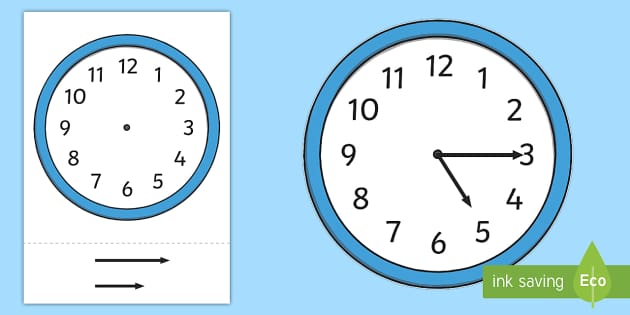

Looking for a blank analogue clock face to add to your classroom display or your maths activities? Then you've come to the right place.
 blank clock face
blank clock face  blank clock faces
blank clock faces  clock
clock  clock display
clock display  clock face
clock face  clock template
clock template  clocks
clocks  o clock
o clock  telling the time
telling the time  time
time  clock faces
clock faces  analogue clock
analogue clock  make a clock
make a clock  blank clocks
blank clocks  clock face templates
clock face templates  time displays
time displays  measurement
measurement  year two
year two  level 2
level 2 
Looking for a blank analogue clock face to add to your classroom display or your maths activities? Then you've come to the right place.
To start using this resource in your classroom, all you've got to do is click 'Download Now' and print it off. Then, simply attach a big and small hand with a split pin, and you're ready to go. You could make them yourself for a display or get your class involved with making them for a fun, hands-on activity.
Once your clock is finished, it'll be a helpful visual aid that you can use time and time again to teach children how to tell the time on an analogue clock face. Time is a key topic in maths lessons, so we're sure that you'll be reaching for this resource often.
If you're looking for ideas for activities you could use with the finished blank analogue clock face, then we've got some of those for you too. You could call out a time and get your pupils to hold up their own clock, showing the time you've called out. This helps them to correlate how times are written and spoken with how they look on an analogue clock.
This resource would also be great for children to take home and refer to when they're doing homework about telling the time. They can practice reading the clock however many times they like.
One of the most common stumbling blocks children come across when learning how to read analogue clocks is that the numbers on the clock face mean different things depending on which hand is pointing to it.
For example, if the short hand is pointing to 6, that means '6 o'clock'. Simple enough, right?
But if the long hand is pointing to 6, that means 30 minutes past, or half-past. This is where it gets confusing because the same number means two different things.
Getting children to make their own clock analogue clock face is a great way to help them get their heads around this. They can get used to the idea of the different hands having different functions and can play around with them until they understand the concept.
Once your pupils grow more confident with telling the time after using this blank analogue clock face, there are resources that you can use to test their skills and reinforce their learning.
Of course, you can also explore our range of Clock Templates to find something that suits you and your class. Or, for even more resources to help children tell the time with a clock, take a look at our collection of time-themed resources here!
To get clued-up on how to effectively teach time, visit our Clock Face Teaching Wiki.
On the last Sunday of March, the clocks go forwards one hour in the UK. This is known as British Summer Time (BST). It happens because, in spring, the days start getting longer, so there's more daylight in the morning.
In 1916, when British Summer Time was introduced, large parts of Britain still relied on farming and manual labour. In these industries, the extra daylight in the mornings meant more time for work, so the clocks were brought forward to make the most of this time.
They go back in October when the days are shorter again.
 Home
Home  Membership
Membership  Customer Support
Customer Support  Create
Create  Blog
Blog 
